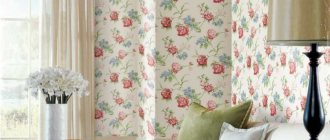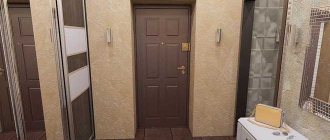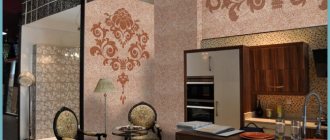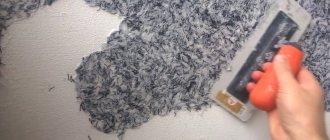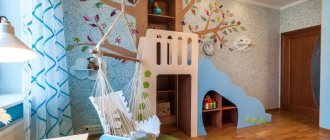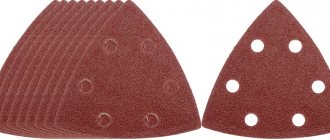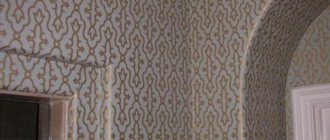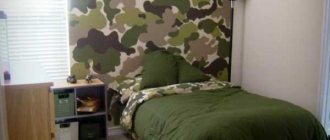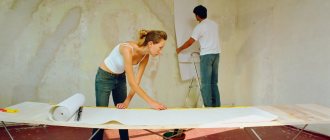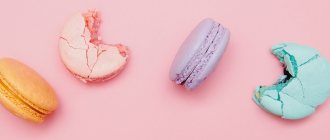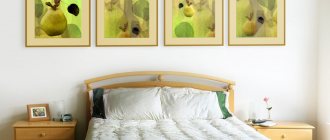Kikimora
11972 0 9
Kikimora July 11, 2017Speciality: I love my home, I like to equip it, periodically change something, do it with my own hands. There are no special hobbies. I am the administrator of a small women's forum.
The colorant will help create the coating of the desired shade.
Despite the fact that the choice of liquid wallpaper is very diverse, it is not always possible to find the right color. Literally half a tone in one direction or the other, and that would be what we need! But these are just not on sale. Fortunately, this problem can be easily solved - liquid wallpaper color added to the mixture during mixing will help you.
I'll tell you what it is and how to use it.
Liquid wallpaper
The French called this coating an outlandish wall covering, the Russians called it liquid wallpaper.
This is a qualitatively new material that does not have a specific name. Liquid wallpaper is a composition of natural cotton or cellulose fibers, high-quality dyes and adhesive composition. Coatings are supplied to the Russian market in powder or liquid form. Powdered liquid wallpaper is diluted with water-based paint and then applied with a roller or spray gun. Liquid wallpaper is tinted only with special paints.
The structure of the finished coating consists of a primary color, for example dark blue, and 2 secondary ones - white and pearl gray. This material is very easy to use - you just need to thoroughly mix the contents of the package, adding a certain amount of water, and the wallpaper is ready for application. The range of applications of this material is really wide: it is used for finishing rooms, corridors of apartments and office premises.
This material hides small cracks and defects, fills gaps in the contact areas of platbands, baseboards, frames, sockets and switches, has no seams, and is not afraid of uneven walls and corners. For those who want to get high-quality walls, their surface should first be coated with a primer.
As a rule, sales consultants offer to purchase branded primers along with liquid wallpaper.
Liquid wallpaper can be used to cover pipes and radiators, but it should be remembered that metal surfaces also need to be covered with a layer of insulation, since due to the high hygroscopicity of this material, rust stains may appear on the surface of the wallpaper.
The main advantage of liquid wallpaper is that it can be applied to concrete and plasterboard surfaces. However, the latter should not have significant defects (chips, holes).
Therefore, when purchasing materials for wall decoration, sales consultants are increasingly recommending liquid wallpaper, which hides unevenness up to 1 cm deep, and also, due to a uniform pattern consisting of small inclusions, will visually make even the most crooked walls smoother. Nevertheless, experts advise pre-filling potholes and sealing cracks with sickle tape to reduce wallpaper consumption.
The coating has the following advantages:
- Wallpaper can be reused to decorate the walls of another room. To do this, remove the coating from the wall with a spatula, place it in a container and also dilute it with water. Wallpaper is ready for use;
- when applying liquid wallpaper, there is no need to correct small surface defects: thanks to their original texture, liquid wallpaper can do a good job of masking individual wall irregularities, provided, of course, that the defects are not very large;
- this wallpaper is fireproof, does not attract dust and does not contribute to its formation;
- successfully combined with any finishing materials;
- resistant to pollution. If you coat them with varnish, you can even wash them;
- The service life of this wallpaper is at least 10 years;
- walls without joints, made in the same style;
- Only environmentally friendly substances are used in the composition.
Liquid wallpaper: colors in 5 selection rules
Colored liquid wallpaper will beautifully and originally complement the interior of the room. The times of scarcity are over, now in construction stores it is possible to find everything you need and of different quality. Some types of products are of great interest.
Particularly interesting was the appearance of liquid wallpaper in the assortment of construction stores. Liquid wallpaper appeared not so long ago, but has already managed to gain popularity.
They are made in the form of a mixture, and their composition includes: cotton or silk fibers, high-quality coloring element, cellulose, colored quartz chips and glue.
Owners who have decided to get a specific shade by adding color to liquid wallpaper are wondering what color to choose and how to get it. Wallpaper of this type is of excellent quality, since it can be painted more than once, but for such coloring you need to know the properties of the color.
When choosing a color for liquid wallpaper, it is imperative to take into account the saturation and brightness of the color
In order to choose a tinted dye for liquid wallpaper, you need to pay attention to the following points:
- Brightness and color saturation;
- Service life and other characteristics;
- Resistance to abrasion and fading;
- Maintenance and ease of care;
- Affordable price.
In large construction stores or special stores for such sales profiles, customers are provided with an automatic tinting service, that is, the buyer selects the color they need or like and, using a computer, specialists calculate the amount that needs to be added for the renovation work of a given room. If desired, specialists can dilute the entire volume of paint at once. But you should take into account that during work the shade of the color you choose may change due to the fact that the amount of light in the room is different. To avoid such embarrassment, you need to apply the color you have chosen on a white sheet of paper, let it dry and bring it to a white wall, keep in mind that such an amount will not be saturated on a large surface. If such paint is produced at a point of sale, it must be used within 2 hours. If you do not cover the walls within these 2 hours, there are effects of color shade mutation. You can see how this happens in the photo.
White liquid wallpaper: an ideal alternative choice
The most universal color of liquid wallpaper is white.
An excellent choice for decorating a living room would be white liquid wallpaper.
White cotton or silk plaster is excellent for wall decor because white color:
- Is the perfect background;
- Great for arrangement with other color;
- Pairs perfectly with elements of red, black, brown;
- Objects made of dark polished wood look great against a white background.
White color is universal and can be suitable for finishing not only the ceiling, but also the walls. White color is especially helpful if the room is dark or its windows face north. Children's rooms will look great in a combination of white and yellow colors. And the combination of green and white creates a bright interior and a cheerful atmosphere.
White color in the interior is the choice of many people, as it is suitable for renovation throughout the house or apartment.
Relief and liquid wallpaper: originality in the home
As mentioned above, liquid wallpaper makes it possible to perform the most intricate artistic drawings, including multilayer textured designs.
You can make the wall surface more original using embossed liquid wallpaper
In order to obtain a relief image, the sequence of actions should be as follows:
- We apply the main background and the background for the largest fragments.
- We transfer the drawing onto the dried main background and make reliefs of a lighter or darker color compared to the background. And at the same time, the main background is painted with a darker or lighter color.
- The edging should be done with a darker shade of wallpaper.
Liquid wallpaper makes it possible to create complex textured relief compositions, and that is why they compete with stucco.
How to find out if you can add color to liquid wallpaper
According to the instructions, such types of wallpaper as liquid are mixed with water. At the stage of wallpaper installation, you can add various additional products. As for tinting liquid wallpaper, there are different points of view on this issue. Craftsmen do not approve of adding color to liquid wallpaper, since there is a wide choice of colors for cotton or silk putties.
So the color you want can be selected at building materials sales points or in specialty stores. You can also do without adding color, but use dry mixtures of different colors and get the same effect.
Tinting is not always a profitable option, because the market offers any palette and color scheme that excludes additives.
You can find out whether you need to add color to liquid wallpaper in the instructions
It is important to know that adding color or other similar mixtures can cause the wallpaper to lose the following properties:
- Reusable use will no longer be possible, as the texture will change;
- Tinting will not allow you to easily recoat the surface if necessary;
- Get many different shades.
In addition, applied varnish or paint will also lead to the loss of a number of unique abilities of liquid wallpaper.
We also note that liquid wallpaper is one of the few materials that make it possible to create a smooth transition from one shade to another.
In order to get a gradient of 5 or more shades you need to use a special technology. You need to apply colors on wet wallpaper: after one color has been applied, you need to start applying the second.
Application in this way will create a smooth flow from one color to another.
Liquid wallpaper: video decor options using a color palette
Such mixtures for making liquid wallpaper come in different colors and consist of different components. Typically, liquid wallpaper includes: mineral components, glitter, silk threads, glue and other components. Correctly chosen colors of liquid wallpaper will allow you to create an excellent interior.
Liquid wallpaper is perfect for decorating a creative bedroom
To create a successful interior, you need to know the classic color combination, for example:
- Gray and green harmonize perfectly with red;
- Pale pink goes well with light green and pale lilac, and rich pink goes perfectly with a shade of blue;
- Orange color will go well with blue and purple, blue patterns are great;
- Shades of yellow and yellow itself go well with green, blue and pale pink tones;
- Golden colors set off red and green colors;
- Green goes well with beige and brown shades;
- For a combination of orange and cornflower blue, turquoise is ideal;
- Blue shades will look perfect with orange and yellow, as well as their shades;
- Any shade of green is perfect for pairing with purple;
- Gray color harmonizes perfectly with crimson, violet and pale lilac.
Is it possible to tint silkplaster liquid wallpaper?
Color palette of liquid wallpaper
“Silk Plaster” is available in a wide range of colors, which makes it easy to make the right choice. But quite often it is not so easy to decide on a color, and there is a desire to use exactly that color range that is not in the catalog.
What to do in this case? Of course, there are different options and one of them is tinting. To do this you need:
Kohler liquid wallpaper
white (this color is not available in all types) and an urgent need to use exactly the color that is not in the catalog.
In this case, you should follow a certain sequence when stirring the material:
Pour water Add color (and stir accordingly) Pour out and stir glitter (if used) Lastly, add liquid wallpaper
, which are subsequently mixed by hand or in an alternative gentle way so as not to damage the structure of the material.
Use the color at your discretion, so that the result meets your expectations, you must use a color that is compatible with the base material
Choosing paint for work
Almost any water-based paint is suitable for this type of work. Most often used:
- regular water-based paint. She will be an excellent choice. The price is not too expensive and is sold ready-made. If necessary, it can be diluted with water. The disadvantages include the fact that after painting liquid wallpaper, a film forms on it and the effect of “breathing walls” disappears;
- acrylic is reliable and durable. Compared with water-based paint, it has better resistance to mechanical damage;
- Latex paints also work great. They have high water resistance. This will ensure the process of washing painted wallpaper in case of contamination;
- One of the best options is silicone paint. It has the best quality, but at the same time its price is quite high.
This video will help you choose the right paint:
Advantages and disadvantages of liquid wallpaper
Liquid wallpaper is one of the newest materials, for which an exact name has not yet been invented. This material is a mixture of cellulose and cotton fibers, high-quality dyes, and adhesive composition. The coating is supplied to the market in liquid or powder form. Wallpaper in powder form is diluted with water-based paint, then applied with a spray gun or roller to the surface of the walls. The tinting of such wallpaper should be done only with the use of special paints, since otherwise no one can guarantee a long service life and environmental friendliness of the coating.
The structure is already ready
The coating consists of a primary color and 2 secondary colors. This material is extremely easy to use - just mix it thoroughly in a special container with the addition of a certain amount of water, after which the mixture can be applied to the walls. The range of applications for liquid wallpaper is quite wide - this material is used for finishing office premises, living rooms and corridors.
When using liquid wallpaper, you can significantly save on preparing the surface of the walls, since the mixture hides small defects and cracks well, fills the cracks where trims, baseboards, frames, sockets and switches fit. The finished coating has no seams, is not afraid of corners and uneven walls, as is the case with traditional paper wallpaper and other types of coatings that involve gluing walls. If it is necessary to achieve an absolutely ideal surface, then experts recommend pre-coating the walls with a primer. As a rule, sellers in construction supermarkets not only indicate the advantages and disadvantages of liquid wallpaper , but also offer to immediately purchase a branded primer. There is a reason for this, since primer and liquid wallpaper from the same manufacturer will help achieve an ideal result.
This material can be used to cover batteries and pipes , but you need to remember that all metal surfaces require prior coating with a layer of insulation, since due to the high hygroscopicity of liquid wallpaper, rust stains will appear on the surface of the wallpaper.
The main advantage of liquid wallpaper is that it can be applied to plasterboard and concrete surfaces . But when applied to plasterboard surfaces, you need to make sure that they do not have significant defects (large chips, holes, etc.). This is due to the fact that liquid wallpaper can hide defects no more than 1 centimeter deep.
One of the most specific and surprising advantages of liquid wallpaper is that it can be reused for wall decoration . To do this, you need to remove the coating from the wall with a spatula, place it all in a special container, dilute it with water - and the wallpaper can be applied again to the walls.
Liquid wallpaper is completely fireproof , it does not attract dust at all and does not contribute to its formation. This coating combines very well with any other finishing materials, creating an interesting and original interior. The wallpaper is highly resistant to any stains. If the coating was used in a room with difficult operating conditions, then experts recommend covering the walls with a special varnish after finishing the work. This will make it easy to wash the wallpaper, removing dirt.
Several videos about liquid wallpaper:
What color is needed for liquid wallpaper: can it be painted and what paints are suitable for tinting?
Liquid wallpaper is one of the modern solutions for elegant decoration of residential and office premises. With their help you can decorate both walls and ceilings.
Despite the significant selection of such finishing materials, it is not always possible to choose the right color that would perfectly harmonize with the interior of the room.
Therefore, questions often arise about how to paint liquid wallpaper, what color to choose for liquid wallpaper, whether it is possible to add color to liquid wallpaper to achieve the desired effect.
Basic Concepts
Tinting and color – what is it? Tinting is the combination of a coloring pigment with a base base in order to obtain the desired color or shade. To solve this problem, take one or more coloring components.
Plaster, white paint, cement, etc. can be used as a base. The main component of tinting is tint, which is nothing more than a concentrated dye with a rich color.
Today there are two types of tinting:
- Computer - the combination of the base base and the coloring matter is carried out in special shakers. This process occurs under the control of a computer program. It allows you to get almost any shade with maximum accuracy.
- Manual - mixing the base and coloring matter is carried out manually in a small container. This method is most often used to treat small spaces.
When re-mixing by hand, it is almost impossible to repeat the shade 100% . This can only be done using a computer.
Is it possible to add color to liquid wallpaper? Definitely yes. A properly selected coloring pigment will not only give the surface an original look, but will also make it easier to maintain, durable and abrasion-resistant.
A white base color is ideal for painting. In this case, you can easily achieve the desired color or shade.
You cannot add color to a base material that has already been mixed with water. In this case, the coloring will be uneven . In addition, the paint may enter the base composition with clumps, which will ruin not only the material, but also the entire work.
Sequence of work
The tinting process is fast and easy to perform. However, to achieve the desired effect, you must strictly follow the instructions for performing the work.
How to combine the coloring matter with the base base:
- The concentrated pigment is dissolved in the required amount of water.
- Add the base to the resulting solution and mix well until the entire composition becomes homogeneous. It is best to do this work with your hands so as not to damage the structure of the material.
- If necessary, you can add glitter and various decorative elements to the water.
- Apply a small amount of material to a sheet of paper or a small area of the walls. This action will allow you to evaluate the resulting shade from the outside and see what it will be like after drying. If necessary, you can add an additional amount of coloring pigment, previously diluted with water.
- The resulting material is applied to the walls or ceiling using a spatula. The air temperature in the room should not be lower than +12 ˚С.
- It is worth noting that after drying the color will look less bright than it was in the solution. Therefore, initially it is necessary to add a little more pigment to make the mixture more saturated.
Liquid wallpaper must be tinted carefully and slowly. It is recommended to immediately make enough material to cover the entire wall. The second batch may vary slightly in color. However, on different walls, a slight difference in color intensity will not be as noticeable as in one area.
Important! Most hardware stores offer customers a computer tinting service. However, when painting wallpaper mixture in an apartment, it is better to use the manual method. The fact is that the base material with pigment diluted in water should be used no later than after 3 hours.
Kinds
| Type of color | Peculiarities | Advantages | Flaws |
| By composition | |||
| Organic | The composition includes organic dyes that give the shade brightness and depth. This color is natural and hypoallergenic. |
|
|
| Synthetic | The composition includes inorganic pigments that protect the surface from gradual fading under the influence of light. |
|
|
| By appearance | |||
| In the form of a paste | Coloring pigment in concentrated form. |
|
|
| As a solution | Coloring pigment in liquid form. |
|
|
Colors also vary according to their area of application.
Today, coloring pigments are produced for:
- latex enamels;
- water-based paints;
- paint and varnish materials;
- oil and alkyd enamels.
Which color for liquid wallpaper is best? The composition and type of release do not matter much. However, when choosing, you should definitely pay attention to the area of application, since not all concentrated coloring pigments are suitable for wallpaper mixtures .
For this purpose, coloring pigments are most often used, intended for water-soluble paints, plaster and whitewash compositions.
Features of choosing a color are as follows:
- First you should choose the desired shade that will harmonize with the furniture and interior items in the room.
- It is best that the wallpaper mixture and color are of the same brand.
- Before choosing a manufacturer, you should study all the characteristics and reviews of the products of this brand. It is best to give preference to brands that have been successfully operating in the finishing materials market for at least 7 years.
- When purchasing, you should pay attention to the expiration date of the coloring pigment.
Painting stages
For most people, the easiest way to paint a wall is with wallpaper mixture already applied to its surface.
However, in this case the question arises: is it possible to paint liquid wallpaper with regular paint? To paint silk plaster liquid wallpaper, you can easily use water-based, acrylic, latex or silicone paints . Silicone paint is of the highest quality. However, it also has the highest cost.
To paint silk plaster liquid wallpaper, you will need the following materials and tools:
- painting tray for paint;
- roller;
- dye;
- water for washing the roller.
Painting order:
- The surface should be treated to remove various contaminants and dust . If there are oil stains on it, they must be degreased. Surface cleaning work should be carried out carefully, trying not to damage its top layer.
- Apply a deep penetration primer to the surface.
- Apply several layers of paint to the wall using a roller. Sometimes a sprayer is used instead of a roller, with which you can get a more uniform coating or make elegant designs.
When painting silk plaster liquid wallpaper, you should pay attention to the fact that it has a textured surface . Therefore, paint consumption increases significantly. While working, it is important to maintain the texture of the material.
Color for liquid wallpaper
Recently, liquid wallpaper has become increasingly popular. The beauty is that it is possible to modify the interior by painting the walls in any desired color. The variety of colors allows you to hide minor irregularities, and it is not necessary that the wall be perfectly smooth.
This wallpaper can be repainted more than once. Their tinting involves using a special pigment. Which color for liquid wallpaper is most advisable to use, their types and expert opinion will be discussed further.
Creation of new color solutions
Despite the existence of a wide color variety of liquid wallpaper, people very often want to create their own unique shade. Color for acrylic paints will help them in this matter. The peculiarity of this substance is that with its help you can enhance or reduce the existing shade on the wallpaper.
The idea can be realized using the following technology:
- First, you should dissolve the powder color in previously prepared water;
- The finished mixture should only be mixed with already colored water;
- then we give it time to brew and you can begin the process of applying the mixture to the surface.
In order for the entire treated surface to have a uniform color, it is necessary to mix each new portion of the material into the remaining mixture that is applied to the surface. If this is not done, a line of demarcation between approaches may appear.
To obtain the desired color or shade, you can use the conventional color mixing method.
First you need to decide on the shade, and then you can start selecting the components. If you have a certain amount of knowledge about mixing colors, then you can cope with such a task on your own. Otherwise, specialists will always come to the rescue. They will help you figure out what combination of colors will give the desired result. To begin with, you can experiment, try different variations on paper. Having decided on a specific option, prepare the mixture and begin finishing the walls. The method of applying liquid wallpaper, prepared by yourself, is no different from the technology with those that were produced in a factory.
The varied color palette of liquid wallpaper also makes it possible to create various effects, including three-dimensional designs. You can get this result by “drawing” on the walls. This approach to decorating a room will make it unique.
The color palette of factory-produced liquid wallpaper is quite rich. However, by taking the color you can create your own shades and then everything depends solely on desire. By mixing colors yourself, you can achieve a unique shade and create a unique interior of any room.
Video of a master class on creating a pattern with liquid wallpaper:
Owners who decide to get a certain shade using a color for liquid wallpaper are faced with the question: “What color to use, and how to achieve an original color scheme for liquid wallpaper?”
. because they can be dyed more than once, but this will require certain knowledge about the properties of dyes (special pigments).
Kinds
Kohler is a pigment that has a rich color. It is used to give the required shade to paints used as liquid wallpaper. Colorants are divided into groups depending on the compositions to which they are added:
· For impregnations, primers on wood;
· For oil and alkyd enamels;
· For latex (water-dispersion paints) enamels;
· For water-based paints;
· For paints and varnishes, as well as ready-made liquid wallpaper.
It can be used as an independent color additive for treating small areas.
The colors are universal colorants and tinting pastes. As for the maximum permissible additive content in paint, 1.5% is permissible for oil-based paints, no more than 20% for water-soluble paints, and no more than 5-7% for other types.
What color for liquid wallpaper is used to achieve a bright effect? The brightness of the final result often depends on the type of coloring pigments. A more saturated bright color is achieved by mixing with an organic dye. Inorganic ones have a smaller range of saturated shades, but their advantage is a high degree of light resistance, which cannot be said about organic ones.
Peculiarities
Tinting solutions can be used with any type of painting materials. They are applied to plastered, concrete, brick walls and for facades. Concentrated pastes are quite expensive, but they have a rich color palette. In this case, it is necessary to maintain precision when mixing.
Solutions do not require special skills when mixing, are affordable, but have a smaller selection of colors. This is not a problem, since for liquid wallpaper the color range provided by the manufacturers is quite sufficient.
The presented solutions consist of:
· Pigments;
· Special additives;
· Fillers;
· Synthetic resins;
· Water.
Due to this, the most concentrated texture is achieved, which can be used without adding base paint to highlight individual elements in a living space.
What color for liquid wallpaper is used: paste or solution?
For this type of “pasting” it is more advisable to use tinting solutions. They are much easier to mix, and in the color palette there is sure to be a shade that suits your interior.
When mixing, remember that the liquid base will be different from the one that has dried on the wall. The finished result will be slightly paler than the mixture. This factor should be taken into account when selecting and mixing the paint composition with the base. It is permissible to use several colorants to achieve the most effective result.
There is a universal method of mixing - computer tinting. Simply select the desired color or shade from those presented. The advantage of this method is 100% color matching. It is difficult to achieve this effect at home.
Do-it-yourself liquid wallpaper: the experience of FORUMHOUSE craftsmen
One of the varieties of interior finishing materials is liquid wallpaper, loved by many for its natural composition, practicality and decorativeness. However, a lot of advantages are negated by the significant cost of the coating, and if the area of the surface to be finished is tens of square meters, the amount looms quite frightening. To save money, members of the FORUMHOUSE portal found a way out - to produce liquid wallpaper themselves.
About the material
Liquid wallpaper is a mix of crushed natural fibers and a binder, which, when mixed with water, forms a paste-like mass. Factory compositions include not only cellulose and glue, but also cotton, silk or flax fibers, and possible inclusions of yarn. To increase the decorative effect, various sparkles of a golden or silver hue are added.
After application, a textured, monochromatic or multi-colored coating of increased strength is obtained. It is more difficult to scratch or tear off, it is not afraid of humidity and drafts.
However, the biggest disadvantage remains the price of the material; even a room with a small square footage will cost a fair amount. If you exclude such a repulsive factor and make your own composition, you get a universal and original finish.
Theory, recycling and desire
A corresponding topic on the forum was created by Al Sergeevich, who considers himself an office plankton with far from golden hands, but events have shown that his hands are just skillful. He set himself the task of finding affordable and attractive finishes for rooms that do not require increased decorativeness. Looking ahead, we can say that his wallpaper went “with a bang” in any room. The engine of progress was the top starter’s wife and the desire to save money.
When my wife encouraged me to renovate the kitchen, I decided to approach the process creatively. I’ve never liked gluing wallpaper, and liquid wallpaper is expensive (and I couldn’t withstand the recommended 1 mm thickness), so I decided to try making liquid wallpaper myself.
Having studied the information on the network, Al Sergeevich came to the conclusion that he would have to hone the technology experimentally, since the available data was general and did not reveal the subtleties. The raw material for the wallpaper was several packs of newspapers, PVA glue (polyvinyl acetate dispersion) was used as a binder, and gypsum was used to increase adhesion to the base.
Method of preparing the mixture
Proportions from Al Sergeevich
For 1 gram of newspapers - 1 gram of PVA, 1 gram of gypsum for 5 grams of paper (dry version). This is the most optimal ratio, but variations in proportions do not greatly affect the quality of the mixture.
As for the amount of water, you can get the recommended proportion of 1 kg per 5 liters from online resources, but our craftsman took a different route. He starts from the desired effect - to get large fibers and a pronounced relief, he pours the paper mixture according to the level, and then squeezes out half of the liquid. If you remove the fourth part, you will get a fine-fiber mass, reminiscent of putty, but the relief on the wall will also be blurred.
Since the initial mass turned out to be a dirty gray color due to the newspapers, Topicstarter tried to tint it by adding dye during the mixing process (there is a large selection in stores). However, along the way, several nuances became clear:
Therefore, Al Sergeevich decided not to bother with color in the future, but to paint the already finished walls, which he did after applying his wallpaper to all the walls.
Both he and the customer, represented by his wife, were satisfied with the result - it turned out nice, and holds tightly, and costs - you couldn’t imagine it being cheaper.
The amount of about five hundred rubles today will of course increase slightly compared to prices a year ago, but not critically. If you take into account the kitchen area of six squares, it turns out to be less than a hundred rubles per square. Self-made wallpaper also had one more advantage.
I considered this option as a cheap way to make repairs in the boiler room or utility room, but I laid laminate flooring, installed furniture and realized that the result was great. If you choose between store-bought and homemade, then of course homemade. They give much more options for creativity, without giving up almost anything. In addition, they are very cheap compared to other materials, plus there are no joints and much more. For the future, I have a kitchen-studio project with an area of 43 m², I will sculpt this wallpaper.
In the kitchen, homemade liquid wallpaper underwent a “baptism of fire” - compote preparations for the winter were made in the amount of forty cans, with the windows closed and without an exhaust hood. No bubbles or peeling, although the humidity increased to the maximum, and many predicted a fiasco for the material in such conditions.
One of the participants in the thread suggested replacing regular gypsum with “secondary” gypsum putty for finishing work. This composition has a longer working period and higher elasticity. Other rationalization proposals were also made, for example, using ecowool as a paper base.
Adding various sparkles, fabric or other fibers to the mixture makes sense if you tint the composition as a whole and then do not color it, otherwise all these additives will simply not be visible.
The problem of quick setting of the solution will be solved not only by plaster for finishing work, but also by replacing a certain amount of water with an acrylic primer. And the adhesion to walls of such a composition will be higher. And to remove the mixture from the wall, just wet the desired area and scrape it off with a sharp spatula or plastic mallet.
Criterias of choice
The main advantages of tinted paints are the following:
· Long service life;
· Resistance to abrasion, fading, easy care;
· Color brightness;
· Affordable price.
When you come to a hardware store, you will probably have a question about what color to choose for liquid wallpaper and not go wrong with the shade. In specialized stores there is such a service as computer tinting. After looking through the catalog, the required marker is selected, and the computer calculates the required proportions for a certain type of paint.
This method is very convenient and does not require extra costs. However, there are some nuances. Appearance may differ significantly from the finished result. This is due to different lighting in the room. Therefore, you need to ask the master to apply the mixture to paper and let it dry. Place the sample against a white wall, because “in the hands in the air” the intensity is hidden. But in a small area, the tint range looks slightly different than in a larger area.
The finished composition must be used within 2-2.5 hours. Otherwise, color change is inevitable.
If the decision was made to embody design ideas and “dance” from the shades of furniture in the interior, then it is easier to mix several markers directly at home. In this case, you must follow the following rules:
· Decide in advance on the shade that will be used when designing the interior of the room. See on the spot what the result is and whether it fits the overall composition;
· It is best to purchase liquid wallpaper and colors from one manufacturer;
· Tinting tubes are easier to use and dose;
· When purchasing, check the date of manufacture and service life.
Choice of colors
Liquid wallpaper is the same decorative plaster or putty, only its composition is different.
It is also mixed with water, into which pigment can be added to change the color. The easiest way to achieve the desired shade is by adding color to the base white mixture. With color it’s more difficult - you may not guess.
Literally any color can be made from white.
Question - which color to choose?
According to composition and release form
In fact, any color is a composition with a high concentration of pigment, in which there are no binding components. It can be organic or synthetic based:
- Organic compounds come in a wide variety of colors. But over time they fade, losing their original brightness.
- Synthetic colors are much more resistant to ultraviolet radiation, but their choice of shades is more modest.
The product is available in the form of a paste or concentrated solution. It is impossible to say which form of release is better - whatever is more convenient for you to work with, then buy it.
But you definitely need to pay attention to the area of application in order to understand whether you can add the color you like to the liquid wallpaper. The fact is that it can only be intended for varnishes or wood impregnations, oil paints or polyurethane enamels.
We need a composition for water-borne paints, whitewash mixtures and plaster. The instructions on the packaging must contain such information.
By manufacturer
Coloring pastes and solutions are produced by both foreign and domestic manufacturers. And this is exactly the case when the quality of products does not particularly depend on the country of origin. Our compounds are no worse than imported ones, and they are also cheaper.
Compare the cost of the most popular materials yourself:
| Image | Description |
| Dufa (Germany) Color based on synthetic resins. Price for 0.75l - 360 rubles. | |
| Tex (Russia) Color-paint for water-based paints, plasters and putties. Price for 0.75 l - 186 rubles. | |
| Profilux (Russia) Universal dye for exterior and interior use. Price for 0.45 l - 148 rubles. | |
| Alpina (Germany) Colorant for manual tinting. Price for 500 ml - 360 rubles. | |
| Carpet Color (Russia) Highly concentrated acrylate based paint. Price for 0.75 ml - 125 rubles. | |
| Comics from Dulux (UK) Elite class colorant. Price for 1 liter - 1000 rubles. |
Ideally, liquid wallpaper and the color for it should be of the same brand. But not all manufacturers of dry mixtures produce similar products. Therefore, any composition that suits you in color and price will do. The main thing is that the expiration date has not yet expired.
Popular
It is not at all necessary to give preference to a foreign manufacturer. Domestic pigments are no worse, but they are cheaper.
In general, among the imported companies, Dufa (Germany) and Dulux (Poland) have proven themselves well. Of course, samples made in Germany or Italy will be of better quality than their Chinese counterparts.
Popular Russian manufacturers: Unicolor, Olympus, Expert, Moment, Atlas, etc.
It doesn’t matter what color you choose for liquid wallpaper. The main thing is to pay attention to the fact that the manufacturer has worked in the construction market for at least 7 years. You should carefully study the reviews and characteristics of the product.
Expert opinion
Color is certainly an interesting thing, and you can color it yourself. Experts advise doing this as follows:
· First, add a small amount of tinting element, stir the mass with a mixer;
· Next they look at the resulting shade; if it does not correspond to what is required, add a little more;
· And so the color is brought to the desired intensity.
You can experiment and get new colors. However, such experiments may not work out for the first time at home. And actually mixing it yourself does not always bring the desired results.
It must be remembered that the colorant is first mixed, and then liquid wallpaper is added, and mixing must be done in a gentle manner so as not to damage the structure.
If necessary, glitter, golden threads, mineral chips or other inclusions are added to liquid wallpaper.
